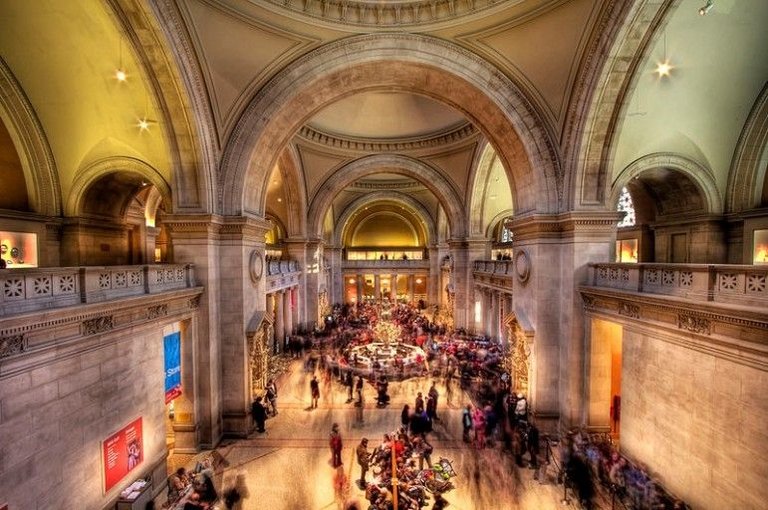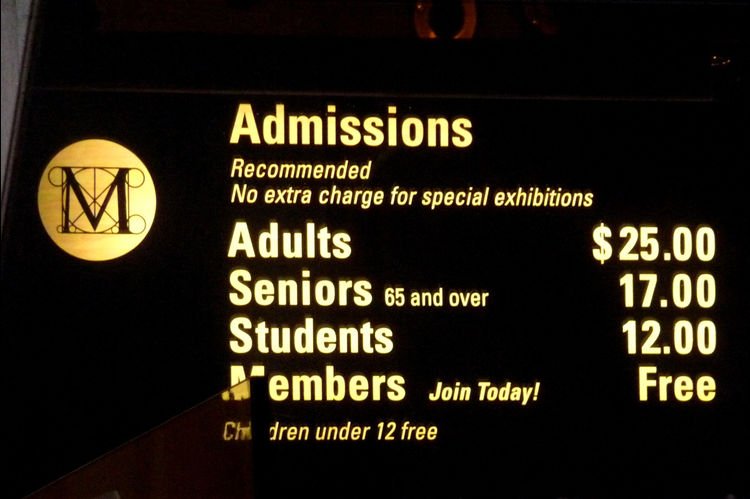
The Metropolitan Museum of Art
The Metropolitan Museum of Art is well-known for its “pay-what-you-wish” admission policy. However, it’s going to abandon the egalitarian policy from March 1. A mandatory $25 ticket fee will be charged to adult visitors who come from outside New York.
Abundant audience from all over the world have been able to enjoy the exquisite art works in the Met for less spending since its founding in 1870. But recently, the amount of donation people pay for the museum has dropped significantly. Although a donation of $25 is suggested, the number of adults who are willing to pay the full suggested price has dropped from 63% to 17%. The voluntary contribution from audience is now averages $9. The museum said. "The goal of the policy is to find a better balance for the institution. The current policy has failed.”

The recommended admission fee of the Met.
Considering the surviving need of museum, the abandon of old tickets policy seems shouldn’t be blamed about. But still there are many opposed voice that do not satisfied with the policy being changed. Some people question the function and responsibility of public museums to give all people chance to receive arts and knowledge, like public libraries do. Money problem should be solved by governments who get people’s tax thus are supposed to care their citizens. So here comes the question, where do art museum make their major revenue from?
As public institution, art museums get their major financial support form contributed revenue like government subsidies, grants and endowments from public, sponsorship and donations. Usually it can count for over 50% of the museums’ revenue for more than half of the museums. However, government’s input to public facilities depends a lot on its whole economic condition, which is unstable. Thus museums’ revenue channels include ticket sales (which can only take over around 2% of whole revenue) and earned income from merchandise and licensing, also from gift shops sales and educational programs. This part of revenue keeps growing and shows the self-support trend of art museums.

Distribution of art museum revenue in North America in 2016. (from Statista: https://www.statista.com/statistics/418233/distribution-of-art-museum-revenue-in-north-america/)
There are many tactics used by museums to bring in income. For example, by holding galas, museums can do fundraising and achieve public attention. But compare to the feeble revenue that gala brings, it’s more effective on community building and cultivating the goodwill of board members and donors.
Fundraising seems like the biggest income source of museums’ revenue, but the current distribution is align with the 80/20 rule— with 80% of donation coming from 20% of donors. In 2017 case study of the Met, the number dispart to 88% of donation from 12% of donors. It is suggested that museums should focus more on cultivating the committed and long-standing donors rather than developing one-time donors.
Reference:
http://www.nj.com/news/index.ssf/2018/01/new_yorks_met_museum_will_start_charging_mandatory.html
https://www.mercurynews.com/2018/01/04/new-yorks-met-museum-will-start-charging-mandatory-25-fee/
http://www.sothebysinstitute.com/news-and-events/news/the-business-model-of-the-nonprofit-museum/
You are right to compare museums and libraries:
So why do you think our culture if OK charging (and paying) for museums and not for libraries? Is the notion of paying to use a library so abhorrent as to be taboo? Could we somehow transfer that to museums?
And, if so, what will plug the gap in the budget?
such a good blog! I think these data are very persuasive!